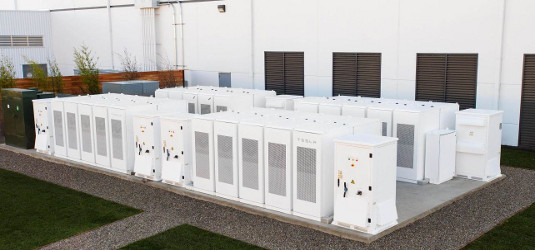In what it is hailing as a first, the CEFC is putting its money behind a project including unsubsidized large scale storage. The CEFC has described the investment as demonstrating the “next phase of the clean energy transition” where greenfield renewable development will provide “a cleaner, reliable and affordable energy supply.”
Singapore’s Nexif Energy is developing the Lincoln Gap project, on which construction will begin by the end of this month. It is scheduled for completion in mid-2018. The project will sell its Large Scale Generation Certificates to ERM Power and its electricity, under an long term PPA, to Snowy Hydro.
The wind+storage system is located 15 kilometres west of Port Augusta.
“We are pleased to include grid-scale battery storage as an essential part of the wind farm investment and were happy to receive strong support and encouragement from the CEFC as our investment partner,” said Nexif Energy Australia’s Zeki Akbas. “With the scalable battery storage at Lincoln Gap we will be able to offer more flexibility to the national grid and improve the reliability of the system.”
The 126 MW stage one of Lincoln Gap has a price tag of $300 million.
The CEFC notes that storage capacity at Lincoln Gap facility will complement other projects in enhancing the resiliency of the South Australian grid. The 10 MW at Lincoln Gap is additional to the 30 MW battery being installed by ElectraNet on the York Peninsula and the much heralded 100 MW Tesla system, being developed by France’s Neoen.
The clock is ticking on the record-setting 100 MW Tesla storage system, with around 20 days to go before Elon Musk’s “installed in 100 days or free” deadline arrives.
The CEFC has noted that its Lincoln Gap investment is additional to its recent $94 million deal to the Kennedy Energy Park in Queensland – Australia’s first wind+solar+storage system.
“Australia’s energy mix requires higher levels of clean energy if we are to meet our Paris emissions reduction commitments,” said the CEFC’s wind sector lead Andrew Gardner – a job title that may need revising given the recent trend for hybrid arrays. “Harnessing flexible capacity, better demand management systems and increased storage capacity in renewable energy projects such as Lincoln Gap and Kennedy are an important contributor to building a stronger, more secure electricity system.”
This content is protected by copyright and may not be reused. If you want to cooperate with us and would like to reuse some of our content, please contact: editors@pv-magazine.com.









By submitting this form you agree to pv magazine using your data for the purposes of publishing your comment.
Your personal data will only be disclosed or otherwise transmitted to third parties for the purposes of spam filtering or if this is necessary for technical maintenance of the website. Any other transfer to third parties will not take place unless this is justified on the basis of applicable data protection regulations or if pv magazine is legally obliged to do so.
You may revoke this consent at any time with effect for the future, in which case your personal data will be deleted immediately. Otherwise, your data will be deleted if pv magazine has processed your request or the purpose of data storage is fulfilled.
Further information on data privacy can be found in our Data Protection Policy.